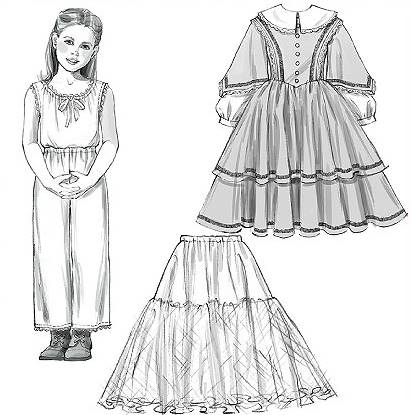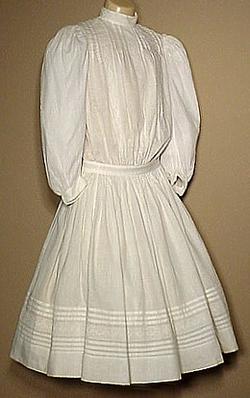| I'll continue to add links to this page as I find them, so check back.
As soon as you have your costume, wear it to a rehearsal, so I can take a photograph and up load it to the website. We need to take a publicity picture ASAP. Those who have costumes ready will be the ones in the picture. You'll have the winter holidays to work on the costumes, but by November you should at least be sending your daughters to class in a rehearsal skirt. Please consider making your life less stressful and do costumes early. I hope that by looking at the pictures of children from the time period, that you'll realize that you may already have clothing in your closets or your children's closet that will work. If not, these pictures should give you an idea what to look for at a thrift store. Remember the kids were from many social economic backgrounds.
Variety is nice.
Colors Although we are used to looking at black and white and sepia photos from the time period. Humans prefer color if they can get it. Aniline dies were created in the 1890s, and so it is was also known as the "Mauve Decade" because of the colors. Look at this page to see the some of the colors from Mary Chamberlain’s shoes from the 1890s. Necklines High for day time. The play is set in the daytime. Lower for evening. The vaudeville performers may use evening wear in a couple of numbers.
Shoes in general Button and slip-on shoes and ankle boots, but buckles weren't very common in this period. Girls Shoes Simple soft ballet shoes work great. Sound great on a noisy stage, easy to dance in. Not as loud, and many people already have them, or could use them. And they are available at Wal-Mart. Usually only black, pink, or white are available at Wal-Mart. While black is fine, the pink ones should be died to keep from looking too much like "pink ballet shoes." In a pinch I've also spray painted them! Boys Shoes School boys may be barefoot or wearing black or brown
ankle
boots. Here is a picture.
Always wear socks with shoes. Girls Legs Note skirt length: Younger girls wore skirts to just below their knees. The skirts got longer as the girls got older, by high school graduation they reached the floor. Boys Legs After being cast, don't make changes to your hair without consulting the directors first! Girls
Boys
The oldest children may look more like the adults if you like, but I would steer away from larger bustles, unless called for in the Vaudeville. BOYS
Fabrics to avoid for the School Children
Note: It was popular to dress children in dark blue, black, or
brown; because it would show dirt less and cut down on washing. That
would make for a very boring stage picture though.
Hats were common, but please remember that the lighting in the theater
comes from above, and hat brims cause shadows across the child's face which
would be better to avoid.
|

1889 Notice skirt lengths, stockings, colors, sleeve shapes, fullness of skirt, etc. Make the Dorothy dress in a nice calico (floral print) and it would work also, but avoid blue and white gingham or your child will only look like Dorothy. And
another pattern, a little earlier, but would still work.
3 female 1 male from fashion plate of the period.
Current McCalls Pattern: sleeves on the outer dress from an earlier time period, but could still work. 
1880s but would still work. More pics: http://www.shootingstarhistory.com/children.html Current Simplicity patterns that would work:
More patterns mostly for adults. Note mutton sleeves. Children's patterns. Note sailor suits for boys and girls will work for this time period also. Whole page of links to children's clothing Girls
dress 1886 but avoid white on stage.
Great plaid dress! White cotton rose printed muslin girl's dress, pink cotton lining, c. 1906 Blue cotton boy's shirt, long sleeves, pink ribbon and lace trim, 1893-1895 More from the Wisconson museum More info Wikipedia artical on clothing of the 1890s mostly adult clothing. Classic Pinafore popular for many decades. Sailor suits were popular for boys and girls.
Suit Photo of Victorian School Children More Victorian girls clothing from 1889 Pics from the UK but similar More Victorian Children Mostly adult costumes
and hairstyles from painting and fashion plates of the period.
Pictures and ideas about finding costumes on EBAY |
| For those who are costume challenged. Look through the info above, you may already have something in your closet that would work. And just because we were asked to do so, you may also rent a costume from us for $50 + a $25 deposit, as long as our costumer knows by October 5th that you need this. You'll still need to provide shoes if needed. |


